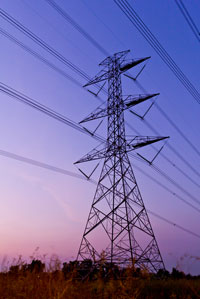Of InterestNIST & The Smart GridSmart Grid: A Beginner's GuideExamples of Smart Grid StandardsSmart Grid Interoperability PanelSmart Grid Advisory CommitteeStandards Information Resources from NIST and SGIPResearch, Reports & PresentationsFederal Register NotificationsCongressional TestimonyPress ReleasesInternational CoordinationGreen Button InitiativeGlossariesNIST Smart Grid Collaboration Wiki
Smart Grid National Coordinator General Information:
301-975-2232 Telephone
301-975-4091 Facsimile
smartgrid@nist.gov
100 Bureau Drive, M/S 8100
Gaithersburg, MD 20899-8100

Smart Grid: A Beginner's Guide
Who? | How? | What? | Why? | What? (A second "what") | When? | Where?
 |

Who?Who will be affected by Smart Grid Standards? Just about all of us will be affected by Smart Grid Standards. The electrical grid of the 20th century—our existing grid—is essential to modern life, as we quickly discover when the power goes out. The electrical grid of the 21st century will be even more integrated into our daily lives. At NIST, we've identified 22 stakeholder groups that we're involving in the standards coordination process, including: utility companies; appliance and consumer electronics providers; consumers—residential, commercial, and industrial; renewable power producers; and state and local regulators. |
 |
How?How are Smart Grid Standards identified, developed, and coordinated? Under federal law (Energy Independence and Security Act of 2007), NIST has been given the key role of coordinating development of a framework for Smart Grid standards. NIST's National Coordinator for Smart Grid Interoperability launched a three-phase plan to jump-start development and promote widespread adoption of Smart Grid interoperability standards:
|
 |
What?What is the Smart Grid?  What is the Smart Grid? Before we look at the importance of standards for the Smart Grid, you'll want to know a bit more about the Smart Grid itself. The Smart Grid is a planned nationwide network that uses information technology to deliver electricity efficiently, reliably, and securely. It's been called "electricity with a brain," "the energy internet," and "the electronet." A more comprehensive definition we use at NIST is "a modernized grid that enables bidirectional flows of energy and uses two-way communication and control capabilities that will lead to an array of new functionalities and applications." Unlike today's grid, which primarily delivers electricity in a one-way flow from generator to outlet, the Smart Grid will permit the two-way flow of both electricity and information. Want to learn more about the Smart Grid? What is the Smart Grid? Before we look at the importance of standards for the Smart Grid, you'll want to know a bit more about the Smart Grid itself. The Smart Grid is a planned nationwide network that uses information technology to deliver electricity efficiently, reliably, and securely. It's been called "electricity with a brain," "the energy internet," and "the electronet." A more comprehensive definition we use at NIST is "a modernized grid that enables bidirectional flows of energy and uses two-way communication and control capabilities that will lead to an array of new functionalities and applications." Unlike today's grid, which primarily delivers electricity in a one-way flow from generator to outlet, the Smart Grid will permit the two-way flow of both electricity and information. Want to learn more about the Smart Grid?
|
 |
|
 |
What (A second "what")?What exactly are the Smart Grid Standards? Hundreds and hundreds of standards will be required to ensure the building of an efficient and effective Smart Grid. (For comparison purposes, one of today’s smartphones typically incorporates over 150 standards.) For the Smart Grid, we’re still in the early stages of developing the framework for the standards and the lists of specific standards. Go to the Examples of Smart Grid Standards page for descriptions—both non-technical and technical—of some already-established, individual standards that are expected to enable the growth of the Smart Grid.  |
 |
When?When do we need Smart Grid Standards?  As soon as possible - and we’ve already made significant progress in developing these standards. Smart Grid standards have been recognized as a national priority since the Energy Independence and Security Act in 2007. And the Administration has further accelerated the process through the American Resource and Recovery Act. However, standards development can take a long time. As soon as possible - and we’ve already made significant progress in developing these standards. Smart Grid standards have been recognized as a national priority since the Energy Independence and Security Act in 2007. And the Administration has further accelerated the process through the American Resource and Recovery Act. However, standards development can take a long time.For the Smart Grid, we’re trying to put those standards in place in less than five years. (For comparison purposes, the standards for the telecommunications industry were developed over a period of several decades.) Here’s a timeline of some major developments related to Smart Grid Standards. |
 |
Where?Where are standards developed? Within each industry, there are groups of experts who come together to discuss, develop, and update standards. These groups are called standards development organizations (SDOs) or standards-setting organizations (SSOs). For the Smart Grid, there are over 25 SDOs and SSOs involved in updating current standards and developing new standards. These include, for example, IEC, IEEE, IETF, ISO, ITU, NAESB, NEMA, SAE, and many more. |
Click here to download a printable version of 'Smart Grid: A Beginner's Guide'

 Why?
Why?